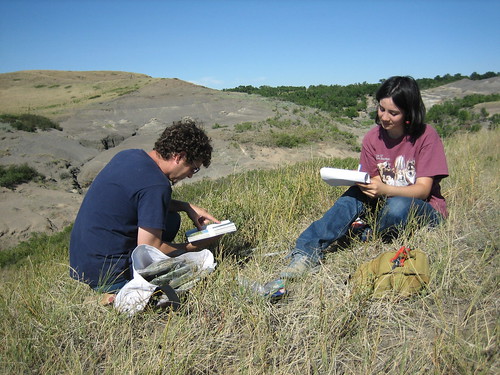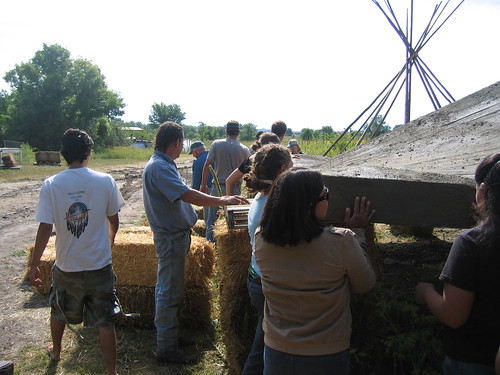NPS Develops Management Plan for Badlands South Unit
The National Park Service has begun working on a General Management Plan for the South Unit of Badlands National Park. The public is invited to submit comments (59 KB PDF) and make suggestions during this important process. Comments on Newsletter #1 Winter 2008 (693 KB PDF) are due April 11, 2008.
Some of the issues under consideration in the plan include:
General Management Plan (GMP) - As Described in Newsletter #1 Winter 2008
According the GMP, The following concepts range from continuation of current management or shared management to management by an entity other than the NPS. Congressional action would likely be required to put into effect alternatives based on these concepts.
CONCEPT #1
The NPS would continue to manage the South Unit as one of two units of Badlands National Park. All the laws, regulations and policies pertaining to units of the National Park System would remain in effect, as would the specific enabling legislation that established the park. In addition, the 1976 Memorandum of Agreement between the NPS and the OST would remain in effect.
CONCEPT #2
Management of the South Unit of Badlands National Park would be shared by the NPS and the OST. The NPS and OST would work together to manage resource protection and visitor use in the South Unit. The laws, regulations, and policies pertaining to units of the National Park System would remain in effect, as would the specific enabling legislation that established the park and any appropriate OST ordinances and resolutions. The NPS and OST would renegotiate the 1976 Memorandum of Agreement to reflect the changed relationship between the two parties. The NPS and the OST would each contribute funding and staff for management of the South Unit.
CONCEPT #3
The South Unit of Badlands National Park would be managed by the OST with technical assistance provided by the NPS. The primary management responsibility for the unit would rest with the OST, while NPS could assist the OST with technical guidance in resource management and visitor use as requested, or as required by authorizing legislation. This concept could be implemented by recreating the South Unit as an affiliated area of the National Park System or by establishing a separate new unit of the National Park System. In either instance, all the laws and policies pertaining to units of the National Park System would remain in effect. The mechanism for funding varies depending on whether the South Unit would remain within the National Park System or become an affiliated area.
CONCEPT #4
The lands of the South Unit would be managed by OST as a Tribal Park/Preservation Area or in some other manner determined by the Tribe, in accordance with Tribal ordinances and resolutions. Staffing and funding would be the responsibility of the Tribe. This concept would deauthorize the South Unit of Badlands National Park and end NPS management there.
Note: If Concept 4 were to be selected, a GMP would not be needed, because the South Unit would no longer be a part of the National Park System. In that case, the following information about resource management and visitor use options would not apply.
Prairie Dog Management Plan and Environmental Assessment
Some of the issues under consideration in the plan include:
General Management Plan (GMP) - As Described in Newsletter #1 Winter 2008
According the GMP, The following concepts range from continuation of current management or shared management to management by an entity other than the NPS. Congressional action would likely be required to put into effect alternatives based on these concepts.
CONCEPT #1
The NPS would continue to manage the South Unit as one of two units of Badlands National Park. All the laws, regulations and policies pertaining to units of the National Park System would remain in effect, as would the specific enabling legislation that established the park. In addition, the 1976 Memorandum of Agreement between the NPS and the OST would remain in effect.
CONCEPT #2
Management of the South Unit of Badlands National Park would be shared by the NPS and the OST. The NPS and OST would work together to manage resource protection and visitor use in the South Unit. The laws, regulations, and policies pertaining to units of the National Park System would remain in effect, as would the specific enabling legislation that established the park and any appropriate OST ordinances and resolutions. The NPS and OST would renegotiate the 1976 Memorandum of Agreement to reflect the changed relationship between the two parties. The NPS and the OST would each contribute funding and staff for management of the South Unit.
CONCEPT #3
The South Unit of Badlands National Park would be managed by the OST with technical assistance provided by the NPS. The primary management responsibility for the unit would rest with the OST, while NPS could assist the OST with technical guidance in resource management and visitor use as requested, or as required by authorizing legislation. This concept could be implemented by recreating the South Unit as an affiliated area of the National Park System or by establishing a separate new unit of the National Park System. In either instance, all the laws and policies pertaining to units of the National Park System would remain in effect. The mechanism for funding varies depending on whether the South Unit would remain within the National Park System or become an affiliated area.
CONCEPT #4
The lands of the South Unit would be managed by OST as a Tribal Park/Preservation Area or in some other manner determined by the Tribe, in accordance with Tribal ordinances and resolutions. Staffing and funding would be the responsibility of the Tribe. This concept would deauthorize the South Unit of Badlands National Park and end NPS management there.
Note: If Concept 4 were to be selected, a GMP would not be needed, because the South Unit would no longer be a part of the National Park System. In that case, the following information about resource management and visitor use options would not apply.
Prairie Dog Management Plan and Environmental Assessment
- The NPS favors the creation of a series of zones for prairie dog management.
- Prairie Dog Buffer Zone - In this one-quarter mile buffer on park lands adjacent to private lands, prairie dog control would be initiated by private landowner complaint. If 80% of the problem prairie dog colony lies within the buffer zone and encroachment is evident, the entire prairie dog colony would be controlled. All other buffer towns would be managed so that the aggregate buffer zone acreage does not exceed the estimated 2006 acreage of prairie dog colonies in the buffer zone.
- Bison Management Zone - In the bison management zone, prairie dog populations would be managed to balance their food needs with the forage requirements of the bison. Prairie dog populations would be allowed to fluctuate naturally in densities and acreage until the point that the acreage of prairie dogs plus the acreage used by the bison herd exceeds roughly one-half, or 50-60%, of the available suitable habitat for both species.
- Prairie Dog Free Range Zone - In this zone, prairie dog populations would be allowed to fluctuate naturally in numbers and in total acreage of colonies. Any prairie dog control would be limited to administrative areas where prairie dog colonies conflict with other park management goals or objectives.
- Prairie Dog Control Zone - In this zone, prairie dogs would be managed to occupy from 7 to 15% of the available suitable habitat (currently they occupy 7% of suitable habitat in this zone). This zone includes the remainder of North Unit lands that are not managed under one of the other three zones.
*Maps of each zone are included in the report.








